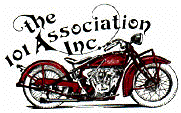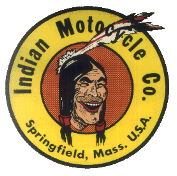Warning: if you use a shim sleeve or for that case anything tapered locking together is not to use any kind of oil, grease or locktite! The cone type shaft-hub connection is self locking by friction. It must in every case be assembled dry because the capillary action is pulling in a layer of the substance between the parts that for one reduces the friction between the parts! (even locktite) and secondly will not allow the parts to locate accurately.
This area of the crankshaft might be of more importance than one thinks. I have been pondering about the reoccuring problem with Indian motors, that of the piston pins pounding loose the pin lock and pin touching the cylinder wall. For that to happen the only reason I can think of is that the rods is vibrating from side to side and pushes the pin against the locks. That can have a number of causes, crooked rods, cylinder base kiltered or crooked bore, etc. but for many engines that is not the case, so why is this happening?
I had an engine with new everything except crankshaft halves, and drive gear, and "everything" checked out twice to the tee, but it still happened.(everything checked except the crank pin relation and drive gear contact paths, because lack of equipment)
Well, I don't know for certain but the crankshaft has to make the rods to oscillate from side to side and I can only think of 3 causes for that. The crankpin is not perfectly in line with the crankshaft, there is an excessive play in the crankshaft bearings or the drive gear is not centered.
If the gear is not centered, because of the helical gear there is a constant light pressure to one side, light because the angle of our gears are shallow, but if there is any unevenness in the contact path of the gears, that pressure is shifting and the crankshaft is pulsating in and out or up and down. Not much, but the force is transfered to the top of the rod.
Thoughts and opinions about this is appreciated.


